
The 1901 Pan American Exposition was a grand affair.

President McKinley speaking at the Pan-American Exposition. Cortelyou is seated to his right.

President McKinley (Cortelyou stands just off his left shoulder) at an evening reception the night before he was shot.

The electrically-lit 1901 Pan American Exposition.

New inventions were on display.

William Jennings Bryan with Sioux chiefs at Pan-American Exposition cultural exhibit.


George B. Cortelyou

Inside the Temple of Music building.

Leon Czolgosz, the anarchist who shot President McKinley in the Temple of Music.

James B. Parker, the African-American who initially stopped the assassin.

The ambulance at the Exposition.

Electric light was not available in the operating room.
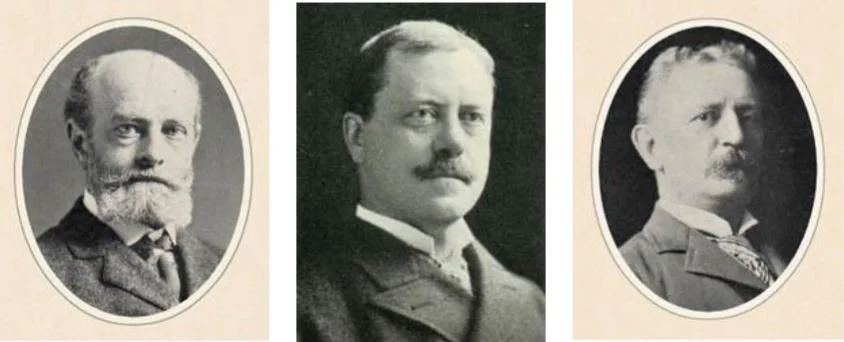
Doctors who treated President McKinley after he was shot were Dr. Matthew Mann and Dr. Roswell Park and Dr. John Wells.

Outside Governor Milburn's home, Cortelyou updates newspaper reporters on President McKinley's recovery.

Young George B. Cortelyou while attending a military academy.

Cortelyou, the postal clerk.

The 'War Room" set up to coordinate activities related to the Spanish-American War. Cortelyou stands at map.

The Treaty of Paris, signed on December 10, 1898. This treaty officially ended hostilities and ceded territories like Guam, Puerto Rico, and the Philippines to the United States, ending the Spanish-American War. President McKinley looks on with Cortelyou behind.

Theodore Roosevelt the "Rough Rider"



Theodore Roosevelt

First Lady Edith Roosevelt.

Puck Magazine: President Theodore Roosevelt strides into the White House with Cortelyou in tow.

George B. Cortelyou

"His declaration of independence" 1901-11-06 President Theodore Roosevelt nails a "notice" to the door of a federal building that states: "I will appoint no man to office, even if recommended by the organization, unless he is wholly qualified for the position he seeks and is a man of integrity." Four men in the lower right, one labeled "Machine Politician" and another labeled "Party Heeler," cringe before the notice


TR's Cabinet. Cortelyou to his right.

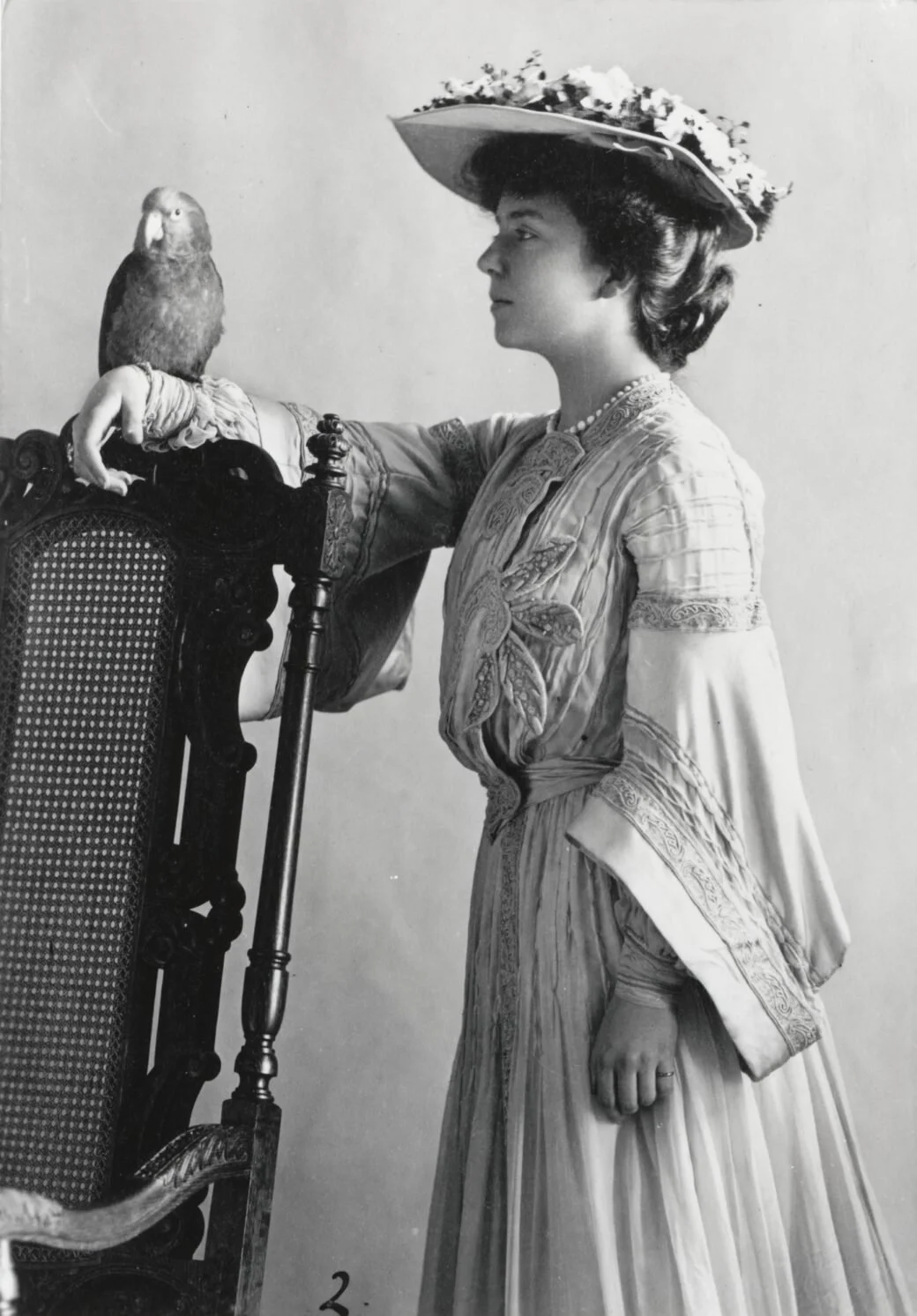
This portrait photograph shows Alice Roosevelt, daughter of President Theodore Roosevelt, posing with a parrot c. 1904.
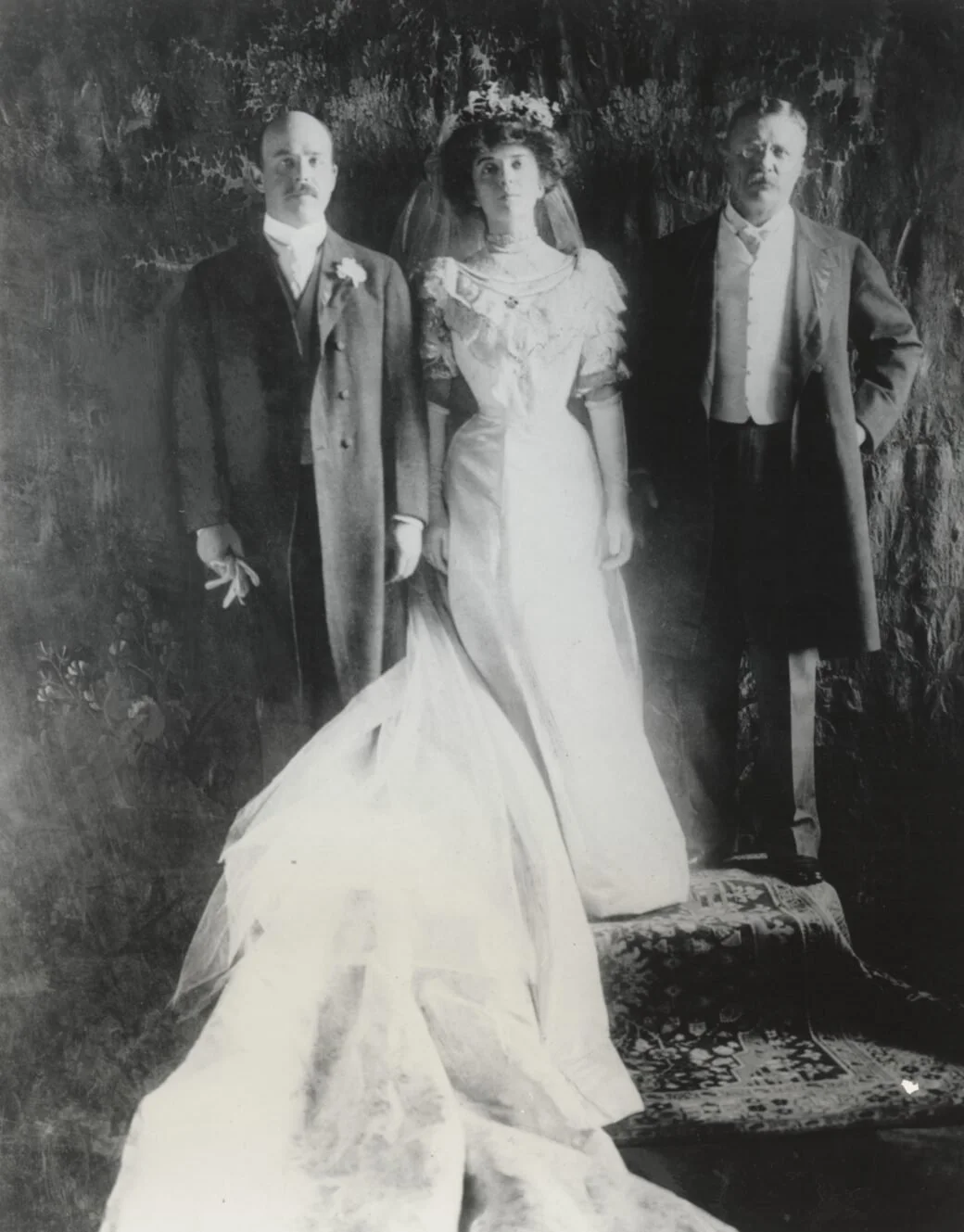
Alice Roosevelt stands next to her husband, Nicholas Longworth (left) and her father, President Theodore Roosevelt (right), on February 17, 1906, the day of their wedding at the White House.

Booker T. Washington. On October 16, 1901, shortly after moving into the White House, President Theodore Roosevelt invited the African American spokesman Booker T. Washington, to dine with him and his family. The event provoked an outpouring of condemnation from white politicians and press in the American South.



Cortelyou joined President Roosevelt during his tour of New England.

Cortelyou during President Roosevelts tour of New England.

President Roosevelt exuding energy like only he can.

The Black Pullman Porters of 1900 were African American men employed to serve passengers aboard luxury railroad sleeping cars, most notably those operated by the Pullman Company. Despite working long hours for modest pay and enduring discrimination, they upheld a reputation for professionalism, dignity, and impeccable service. Many porters were formerly enslaved or descendants of enslaved people, and their work offered one of the few stable job opportunities available to Black men during that era.

Secretary Cortelyou, President Theodore Roosevelt and Secretary of State, John Hay.

Roosevelt and Cortelyou riding in a carriage.

The trolley just before impact with President Roosevelt's carriage. Roosevelt and Cortelyou were injured. The Secret Service agent was thrown under the trolley and killed instantly.

Destroyed carriage after the trolley collision.

The aftermath of the accident.

Colonel William Crook was detailed from the Metropolitan police to protect Abraham Lincoln in 1865 and remained at the White House through many presidencies. He is seen here with other members of President McKinley’s staff, c. 1900. From left to right Col. Crook, Warren Young, Benjamin F. Barnes, George Bruce Cortelyou, Rudolph Forster, Octavius L. Pruden, and Major Benjamin F. Montgomery.

The 1905 diplomatic mission undertaken by TR's daughter, Alice Roosevelt, and others through Asia had it all, the uniquely personal combined with significant events on the world stage. Alice and her travel companions were witnesses to, and occasionally even participants in, incidents and decisions that affected the complicated diplomacy of that pivotal year.

In 1903, President Theodore Roosevelt visited Yosemite and was guided by naturalist John Muir. The two men spent three memorable nights camping, first under the outstretched arms of the Grizzly Giant in the Mariposa Grove of Giant Sequoias, then in a snowstorm atop five feet of snow near Sentinel Dome, and finally in a meadow near the base of Bridalveil Fall. Their conversations and shared joy with the beauty and magnificence of Yosemite led Roosevelt to expand federal protection of Yosemite, and it inspired him to sign into existence five national parks, 18 national monuments, 55 national bird sanctuaries and wildlife refuges, and 150 national forests.

President Teddy Roosevelt in Yosemite Valley, while visiting with conservationist, John Muir. Half Dome in the distance.

President Roosevelt in Sequoia National Park.


Secretary Cortelyou.
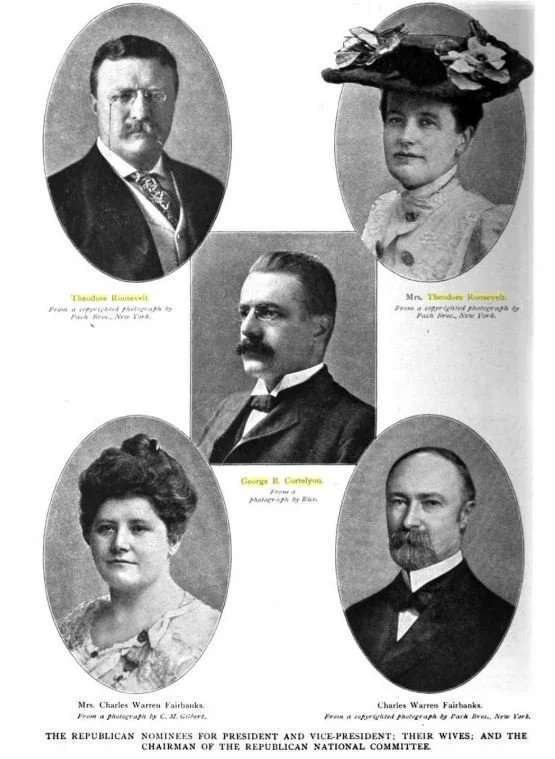
A page from the 1904 RNC Convention Program Guide. RNC Chairman Cortelyou at the center.

The scene from the 1904 Republican National Convention. Roosevelt won by the largest margin in 100 years.

During the 1904 presidential campaign.

"Mr. Sisyphus Cortelyou rolling it up" 1904-09-14 A cartoon in Puck magazine compared Cortelyou, then chair of the Republican National Committee, to Sisyphus as he tried to secure President Theodore Roosevelt’s election to a full term.

"Santa Claus elect preparing for Christmas" 1904-11-30 President Roosevelt appears as Santa Claus gathering gifts, such as "Consulship," "Ambassadorship," "Secretary of Navy," "Secretary of State," "Governorship of Philippines," and others, to place into his bag of Christmas presents, which George B. Cortelyou is holding open. A paper in Cortelyou's pocket is labeled "Post Master General."

"Putting the screws on him" 1904-11-02 Illustration shows George B. Cortelyou turning a vice to squeeze money for President Roosevelt's reelection campaign from a bloated man labeled "The Trusts."

"Ave Theodore!" 1905-03-01 President Roosevelt, as a Roman emperor, rides in a chariot being pulled by an elephant ridden by George B. Cortelyou. Three captives are tied to the back: William Jennings Bryan, Alton B. Parker, and another man. Charles W. Fairbanks rides in a smaller chariot with Henry G. Davis as a captive in tow. Next to them Benjamin B. Odell carries a banner labeled "G.O.P.", except that the "P" has been crossed out and replaced with a "T." Near Roosevelt's chariot another man bears a standard that says "S.P.Q.R." (acronym for a Latin phrase which means "The Senate and People of Rome"), except that the "Q" has been crossed out and replaced with a "T." In the foreground, William H. Taft is carrying a large club. An African American man appears in the lower right foreground.

John Pierpont Morgan, the great financier and consolidator of companies.



Cortelyou during the campaign.


President Roosevelt and his Cabinet. Cortelyou sits directly to his left.

George B. Cortelyou

Cortelyou, his wife, Lily, and daughter, Grace, arrive at the Theodore and Edith Roosevelt home in Oyster Bay, Long Island, for the wedding of the former president’s daughter Ethel, April 1913.

The inauguration of President Roosevelt at the steps of the U.S. Capitol building.
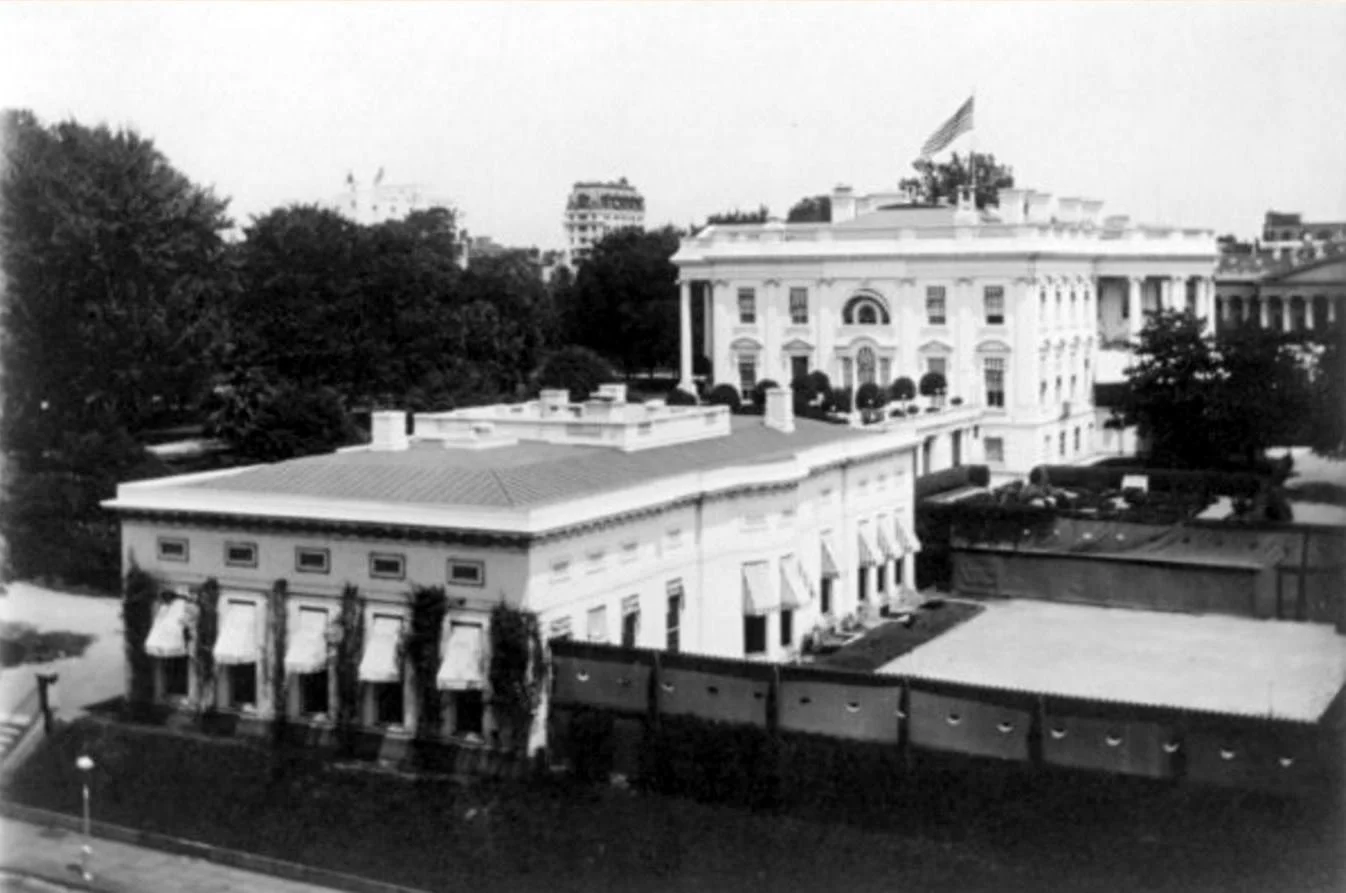
The White House was renovated in 1903, including the addition of the West Wing.

Creating flow for thousands of callers was one of the goals of the 1902 restoration. Visitors are seen here waiting in line to attend a New Year's Day reception (c. 1903).

Immigrants arriving at Ellis Island, New York. Secretary George B. Cortelyou submitted a special request to Congress for over $1 million in improvements to the immigrant station at Ellis Island, responding to a surge in immigration. His proposal included expanded medical facilities, new waiting areas, a water purification plant, and a government tugboat to support operations. Cortelyou played a leading role in advocating for better infrastructure and public health safeguards to meet the growing needs of arriving immigrants.

Ellis Island evaluations of arriving immigrants.

Health screenings of female immigrants at Ellis Island. About 30 percent of the United State's current population, had their ancestors processed at Ellis Island.

Building of the Panama Canal.

President Roosevelt was joined by his wife Edith at the Panama Canal construction site.

President Roosevelt at the Panama Canal construction site.

Cortelyou in his office.

San Francisco earthquake and fire of 1906.

Illustration shows a woman labeled "Wall Street" as a nursery rhyme figure, possibly Little Bo Peep; she has pulled all the paper petals labeled "Tight Money" and "Easy Money" off a paper flower, the center of the flower, on the ground among the petals, shows a medallion that states "In Cortelyou We Trust". Her bodice is labeled "Stock Exchange". George B. Cortelyou, dressed as an Elizabethan suitor, is standing behind her, they are embracing as he holds aloft a diamond ring labeled "Treasury Aid".

PUCK illustration of Roosevelt examining potential successors. Taft sits at left, while Cortelyou sits at right.

President Theodore Roosevelt and Howard Taft.


Inventor, Thomas Edison.

Cortelyou and Thomas Edison. After retiring from the Treasury, Cortelyou became President of Consolidated Gas Company of New York, a position he held for the next 25 years.


Cortelyou while President of Consolidated Gas Company of New York.
